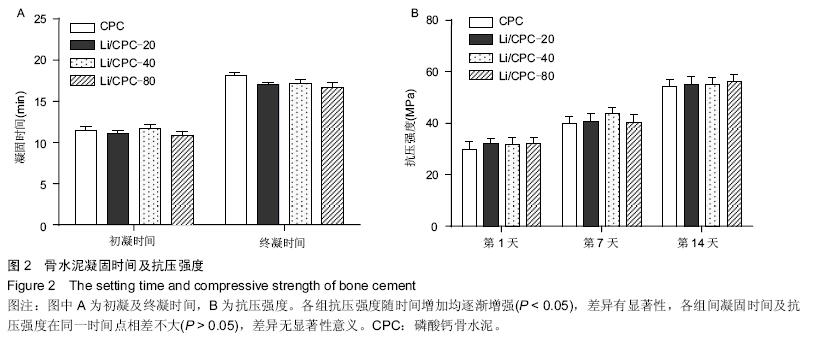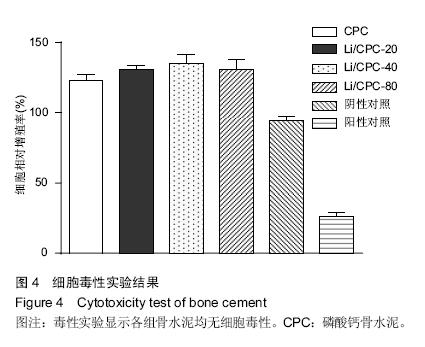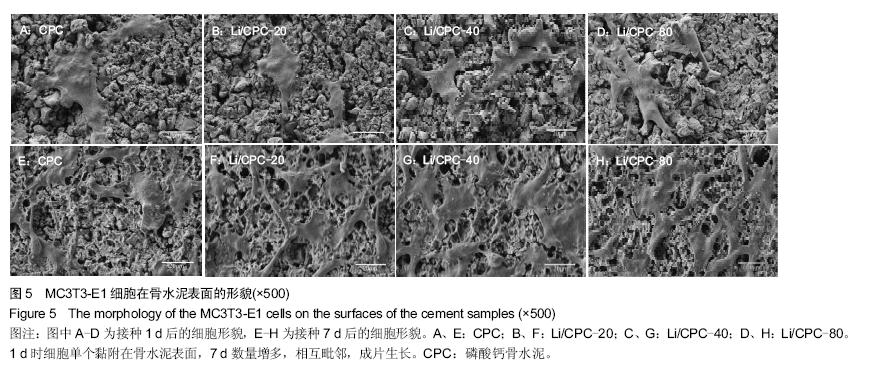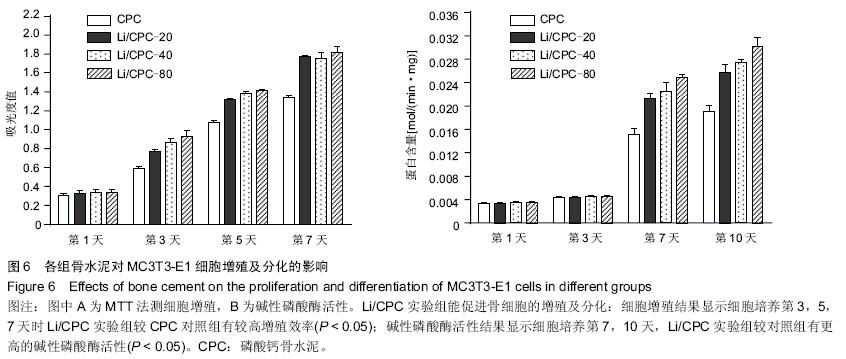| [1] Bonfiglio M, Jeter WS. Immunological responses to bone. Clin Orthop Relat Res. 1972;87:19-27.
[2] Rho YJ, Choe WJ, Chun YI. Risk factors predicting the new symptomatic vertebral compression fractures after percutaneous vertebroplasty or kyphoplasty. Eur Spine J. 2012;21(5):905-911.
[3] Zhu K1, Zhang C, Shao C. Research progress of secondary fracture of adjacent vertebral body after percutaneous vertebroplasty and percutaneous kyphoplasty. Zhongguo Xiu Fu Chong Jian Wai Ke Za Zhi. 2013;27(3):369-373.
[4] Lee DG, Park CK, Park CJ, et al. Analysis of Risk Factors Causing New Symptomatic Vertebral Compression Fractures After Percutaneous Vertebroplasty for Painful Osteoporotic Vertebral Compression Fractures: A 4-year Follow-up. J Spinal Disord Tech. 2015;28(10):E578-583.
[5] Lv Y, Li A, Zhou F, et al. A Novel Composite PMMA-based Bone Cement with Reduced Potential for Thermal Necrosis. ACS Appl Mater Interfaces. 2015;7(21):11280- 11285.
[6] Suzuki Y, Hayashi M, Yasukawa T, et al. Development of a novel fluorapatite-forming calcium phosphate cement with calcium silicate: in vitro and in vivo characteristics. Dent Mater J. 2015;34(2):263-269.
[7] Brown WE, Chow LC. Dental resptorative cement pastes. US, 4518430 A. 1985-5-21.
[8] Pastorino D, Canal C, Ginebra MP. Multiple characterization study on porosity and pore structure of calcium phosphate cements. Acta Biomater. 2015;28:205-214.
[9] LeGeros RZ. Properties of osteoconductive biomaterials: calcium phosphates. Clin Orthop Relat Res. 2002;(395): 81-98.
[10] Ambard AJ, Mueninghoff L. Calcium phosphate cement: review of mechanical and biological properties. J Prosthodont. 2006;15(5):321-328.
[11] Zhang J, Liu W, Schnitzler V, et al. Calcium phosphate cements for bone substitution: chemistry, handling and mechanical properties. Acta Biomater. 2014;10(3):1035-1049.
[12] Blattert TR, Jestaedt L, Weckbach A. Suitability of a calcium phosphate cement in osteoporotic vertebral body fracture augmentation: a controlled, randomized, clinical trial of balloon kyphoplasty comparing calcium phosphate versus polymethylmethacrylate. Spine (Phila Pa 1976). 2009;34(2): 108-114.
[13] Kishimoto KN, Itoi E. Lithium chloride enhances cathepsin H expression and BMP-4 degradation in C3H10T1/2 cells. Biomed Res Int. 2013;2013:143742.
[14] Iwata M, Aikawa T, Hakozaki T, et al. Enhancement of Runx2 expression is potentially linked to β-catenin accumulation in canine intervertebral disc degeneration. J Cell Physiol. 2015; 230(1):180-190.
[15] Qiang YW, Chen Y, Brown N, et al. Characterization of Wnt/beta-catenin signalling in osteoclasts in multiple myeloma. Br J Haematol. 2010;148(5):726-738.
[16] Silva AK, Yi H, Hayes SH, et al. Lithium chloride regulates the proliferation of stem-like cells in retinoblastoma cell lines: a potential role for the canonical Wnt signaling pathway. Mol Vis. 2010;16:36-45.
[17] Berger G, Ullner C, Neumann G, et al. New characterization of setting times of alkali containing calcium phosphate cements by using an automatically working device according to Gillmore needle test. Key Eng Mater. 2006;309-311:825-828.
[18] Gerlier D, Thomasset N. Use of MTT colorimetric assay to measure cell activation. J Immunol Methods. 1986;94(1-2): 57-63.
[19] López A, Montazerolghaem M, Engqvist H, et al. Calcium phosphate cements with strontium halides as radiopacifiers. J Biomed Mater Res B Appl Biomater. 2014;102(2):250-259.
[20] Ginebra MP, Canal C, Espanol M, et al. Calcium phosphate cements as drug delivery materials. Adv Drug Deliv Rev. 2012;64(12):1090-1110.
[21] Sakamoto Y, Ochiai H, Ohsugi I, et al. Mechanical strength and in vitro antibiotic release profile of antibiotic-loaded calcium phosphate bone cement. J Craniofac Surg. 2013; 24(4):1447-1450.
[22] Focardi M, Bonelli A, Pinchi V, et al. Pulmonary Cement Embolism After Kyphoplasty. J Forensic Sci. 2015. in press.
[23] Nakamura H, Takaoka K. Vertebroplasty for osteoporotic vertebral fracture. Clin Calcium. 2006;16(1):153-158.
[24] Schummer W, Schlonski O, Breuer M. Bone cement embolism attached to central venous catheter. Br J Anaesth. 2014;112(4):672-674.
[25] Kuang GM, Yau WP, Lam WM, et al. An effective approach by a chelate reaction in optimizing the setting process of strontium-incorporated calcium phosphate bone cement. J Biomed Mater Res B Appl Biomater. 2012;100(3):778-787.
[26] Kuang GM, Yau WP, Wu J, et al. Strontium exerts dual effects on calcium phosphate cement: Accelerating the degradation and enhancing the osteoconductivity both in vitro and in vivo. J Biomed Mater Res A. 2015;103(5):1613-1621.
[27] Dagang G, Kewei X, Haoliang S, et al. Physicochemical properties of TTCP/DCPA system cement formed in physiological saline solution and its cytotoxicity. J Biomed Mater Res A. 2006;77(2):313-323.
[28] Ginebra MP, Fernández E, Boltong MG, et al. Compliance of an apatitic calcium phosphate cement with the short-term clinical requirements in bone surgery, orthopaedics and dentistry. Clin Mater. 1994;17(2):99-104.
[29] Dou Y, Cai S, Zhou W, et al. Effect of Trace Element Doping on the Hydration Properties of Calcium Phosphate Bone Cement. Rare Metal Mat Eng, 2011,40:59-62.
[30] Liu H, Zhou CR. Self-hardening Calcium Phosphate Composite Scaffold for Bone Tissue Engineering. In: Yin YS, Wang X, eds. Multi-Functional Materials and Structures Ii, Pts 1 and 2. Advanced Materials Research. 79-82. Stafa-Zurich: Trans Tech Publications Ltd; 2009: 19-22.
[31] Wang JC, Ko CL, Hung CC, et al. Deriving fast setting properties of tetracalcium phosphate/dicalcium phosphate anhydrous bone cement with nanocrystallites on the reactant surfaces. J Dent. 2010;38(2):158-165.
[32] Zheng Z, Xiang Q, Liu Y, et al. Preparation and properties of medical calcium phosphate cement. Sheng Wu Yi Xue Gong Cheng Xue Za Zhi. 2006;23(5):1048-1051.
[33] 王迎军.生物医用陶瓷材料[M].广州:华南理工大学出版社,2010. |
.jpg)





.jpg)